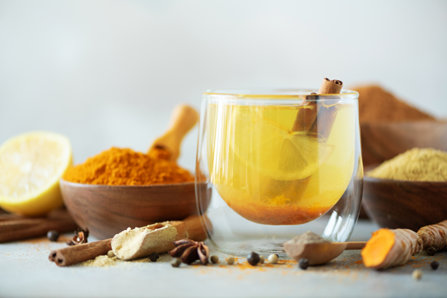Alternatives to Painkillers—Looking at Non-Opioid Pain Relief Options

According to the Centers for Disease Control and Prevention, about 20 percent of Americans (50 million people) struggle with chronic pain. Eight percent (19 million) have high-impact pain. Pain is a significant crisis in the United States, one that the medical sector is still searching for ways to treat effectively.
In the early-2000s, pharmaceutical corporations began heavily marketing opiate painkillers as the solution to America’s pain problem. However, as millions of patients became addicted and thousands died from overdoses, it became apparent that painkillers were not the golden ticket to freedom from pain symptoms.
Why Seek Alternatives to Opiate Painkillers?
Opiate painkillers have been fully exposed as potentially harmful, potentially addictive drugs that can cause serious destruction. Thousands of people die from painkillers every year, with deaths having increased 400% among women and 265% among men just since the turn of the century.
According to the CDC, two-thirds of the 750,000 overdoses that have occurred since 1999 have involved opiates. That means about half-a-million people have died from opioids since the turn of the century, and about one-third of them died from overdosing on a prescription painkiller.
This crisis is tragic and horrifying in many ways. One of the particularly shocking things about it is that these are people who are dying from legal, supposedly helpful drugs that are strongly promoted within our society.
When Americans cannot trust the very medicines they are prescribed to treat their pain, what can they trust?
Treatments to Potentially Reduce Pain Without Taking Opiates
In a continually overmedicated society (overmedicated with severely harmful consequences), people who struggle with pain symptoms might want to consider alternative remedies to physiological conditions. In the case of pain symptoms, people should seek medical advice, but they should also think twice before taking opiate painkillers (especially considering the statistics discussed above).
Thankfully, there are workable alternatives to opiates. When it comes to relieving pain, folks have been turning to the natural world for centuries, searching for plants and natural substances that could help alleviate unwanted symptoms.
While you should always consult with your doctor before trying anything, the following are healthful alternatives to opiates that many have found helpful in reducing pain connected to rheumatoid arthritis, osteoarthritis, and other painful conditions:

- Boswellia Serrate. Also called Indian frankincense, the Boswellia plant has both anti-inflammatory and analgesic (pain-relieving) properties. The plant helps prevent cartilage loss and was proven to reduce pain symptoms associated with osteoarthritis. Taking a Boswellia supplement may help people reduce pain without having to turn to potentially addictive painkillers.
- Capsaicin. Taken from a type of pepper plant, Capsaicin is usually used as a topical cream, gel, or patch. Rather than taking opioids, one might try a Capsaicin cream instead. Entirely non-invasive, Capsaicin is most often used for the treatment of joint pain.
- Turmeric/curcumin. Curcumin, a chemical found in turmeric, blocks the inflammatory cytokines and key enzymes that cause joint pain and swelling.
- Avocado-soybean. Like turmeric/curcumin, avocado-soybean (also called ASU), blocks pro-inflammatory chemicals from compounding in joints and muscles. ASU also prevents the deterioration of synovial cells. Synovial cells line joints and may help regenerate normal connective tissue.
- Cat’s Claw. Another natural remedy particularly useful in anti-inflammatory applications, Cat’s Claw inhibits joint pain and can serve as an adequate replacement for painkillers.
- Fish oil. Fish oil (Omega-3 fatty acid) has numerous health benefits, pain relief being one of them! Once ingested, Omega-3s convert into powerful anti-inflammatory chemicals called resolvins. So converted, the anti-inflammatory compounds decrease joint tenderness and pain symptoms, significantly reducing the need for painkillers.
- Gamma-Linolenic Acid. An Omega-6 fatty acid, Gamma-Linolenic Acid can decrease stiffness, help prevent disease, and reduce joint pain. When combined with fish oil, Gamma Linolenic Acid can significantly reduce the need for painkillers.
- Ginger. Ginger has been used as a healing agent for centuries. Ginger has anti-inflammatory properties similar to those of ibuprofen but in a natural manner. One study found that ginger was just as effective at reducing inflammation as steroidal anti-inflammatories. Some research suggested that two doses of ginger per day had about the same pain-relieving effectiveness as three ibuprofens per day!
Anyone who is desiring pain relief should always talk to their doctor before attempting a pain relief regimen. But by that same token, patients should get informed on their own and do their research to see what types of alternatives to painkillers do exit. When they talk to their doctor about their options, they can have an open and informed discussion on pain relief solutions that do not include taking potentially addictive opiate drugs.
Seeking Treatment for Addiction
One of the main reasons why so many Americans are looking for non-opioid pain relief options is because so many people have become addicted to opiate painkillers that were supposed to help them. This problem has been ongoing since the turn of the century, a two-decade crisis of millions of Americans becoming addicted to allegedly helpful pharmaceutical drugs, and hundreds of thousands dying from them.
If you know someone who started taking opiate painkillers for a legitimate pain condition but then became addicted to them, they must get off of those drugs. Their pain will have to be alleviated in another way, but there is no question that they need to come down off of painkillers. Opiate painkillers can easily cause a lethal overdose, with thousands losing their lives to such substances each year.
Don’t let your loved one become a statistic. Help them find and get into a drug rehab center that will help them address their drug crisis and their pain symptoms all at once. It is possible to experience pain relief without taking addictive drugs, but one must get off of the drugs first.
Sources:


